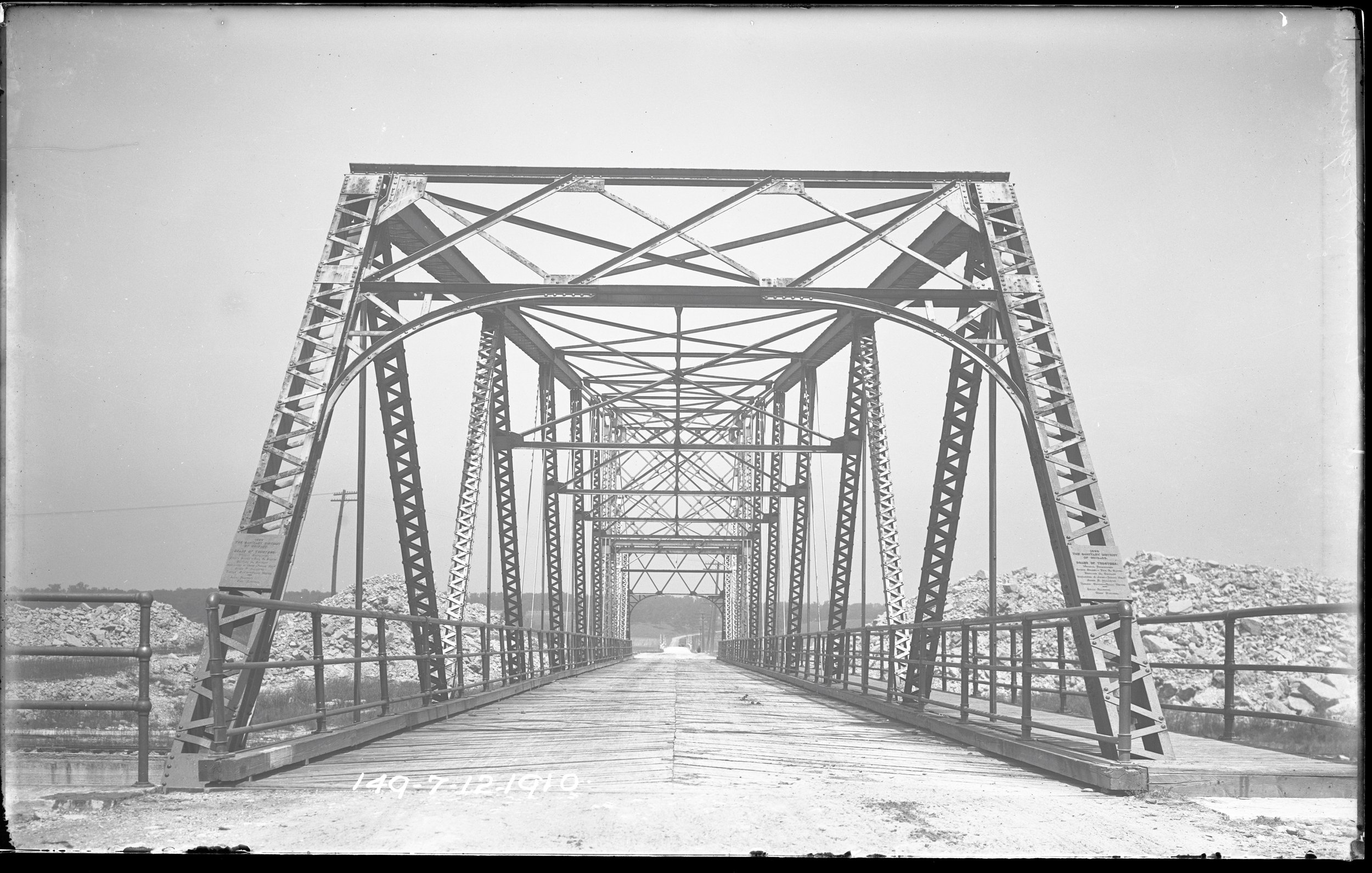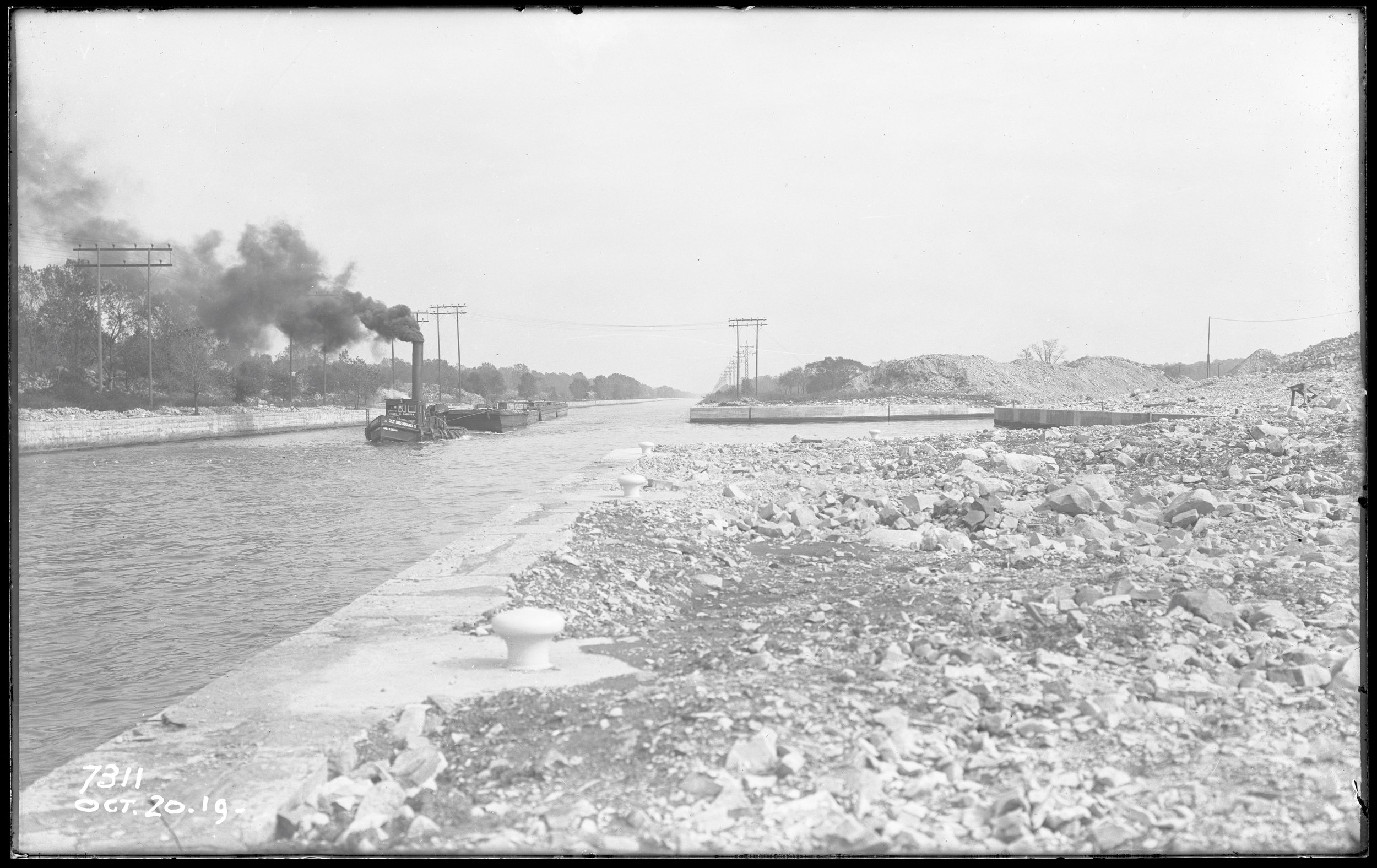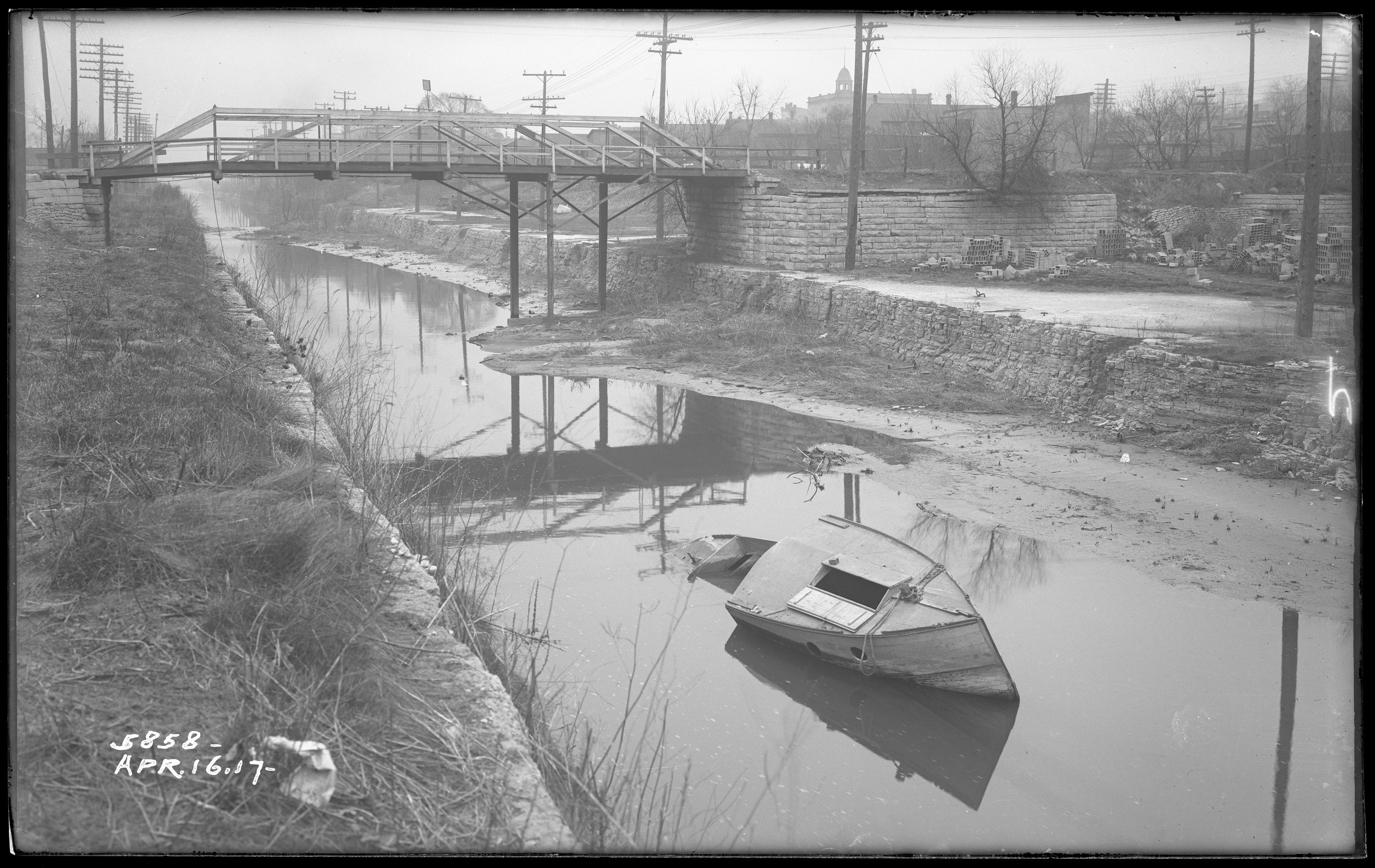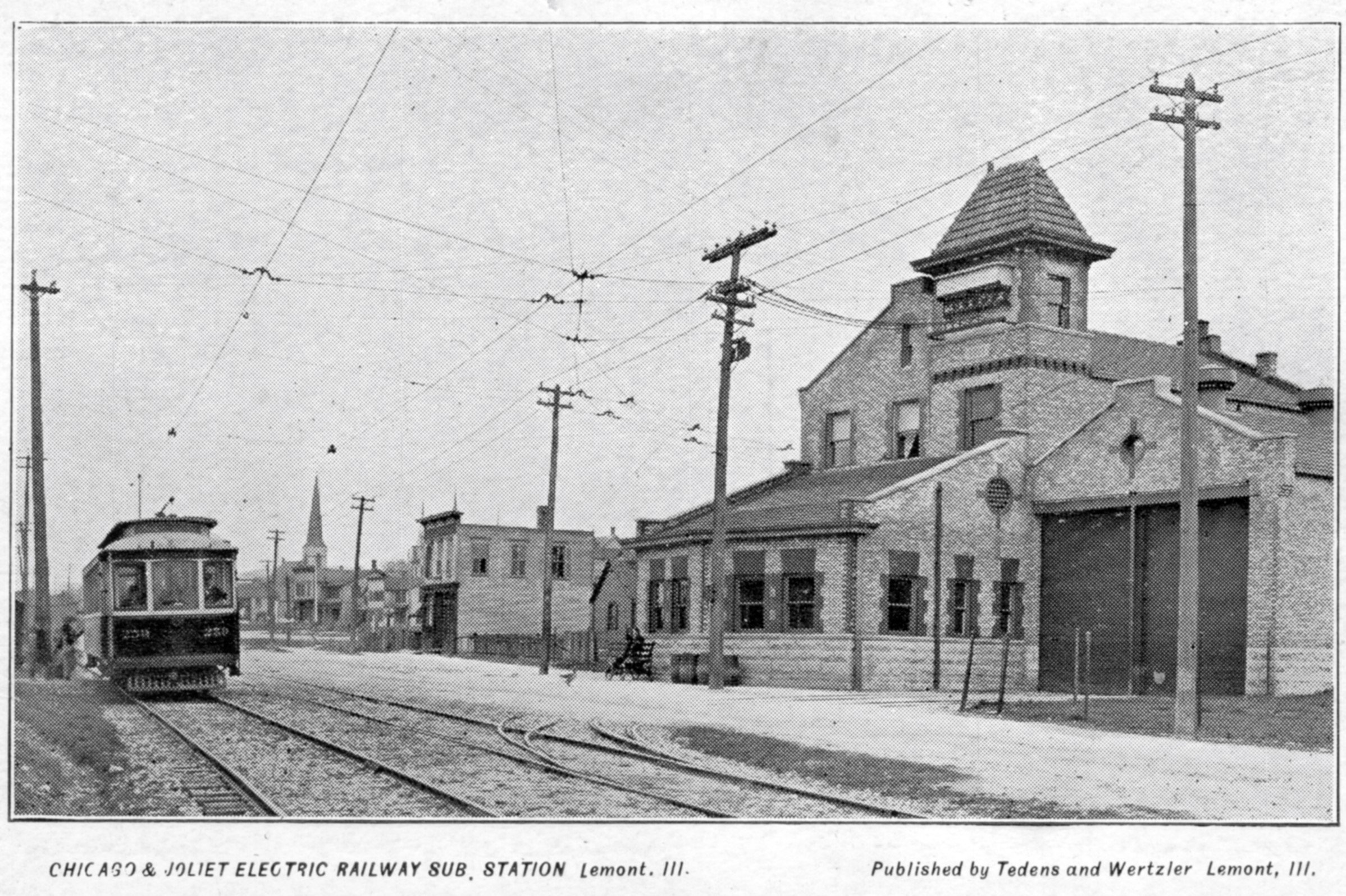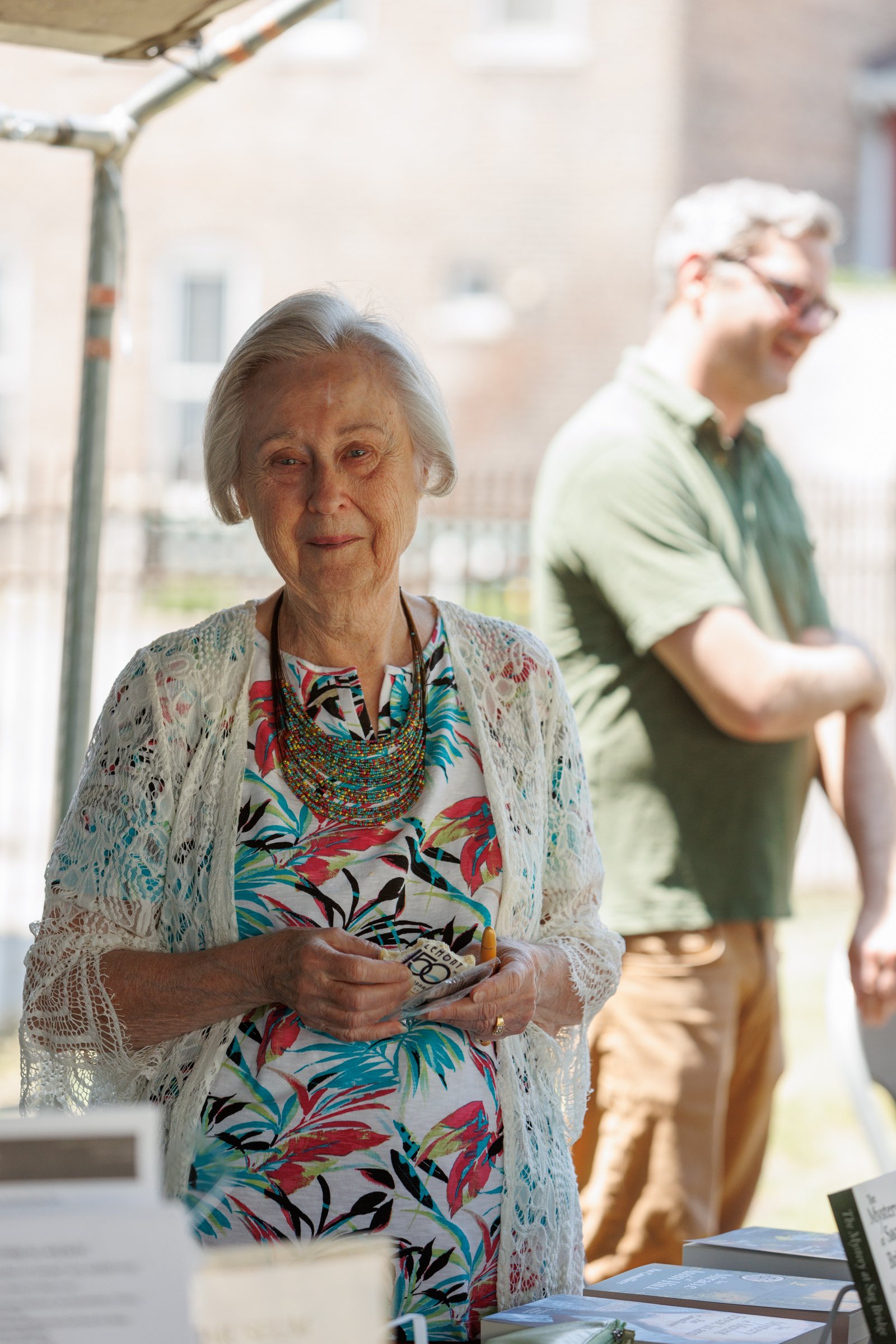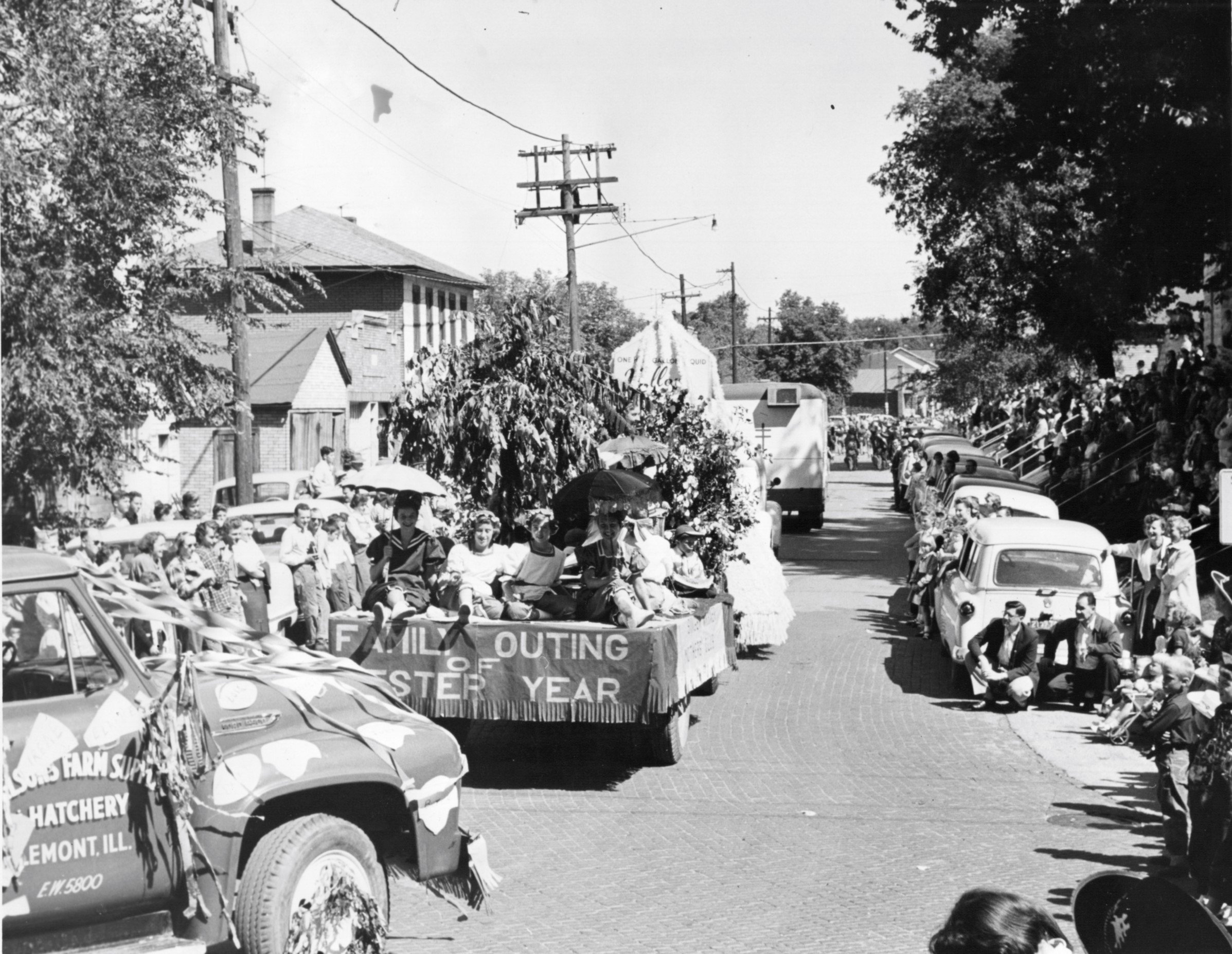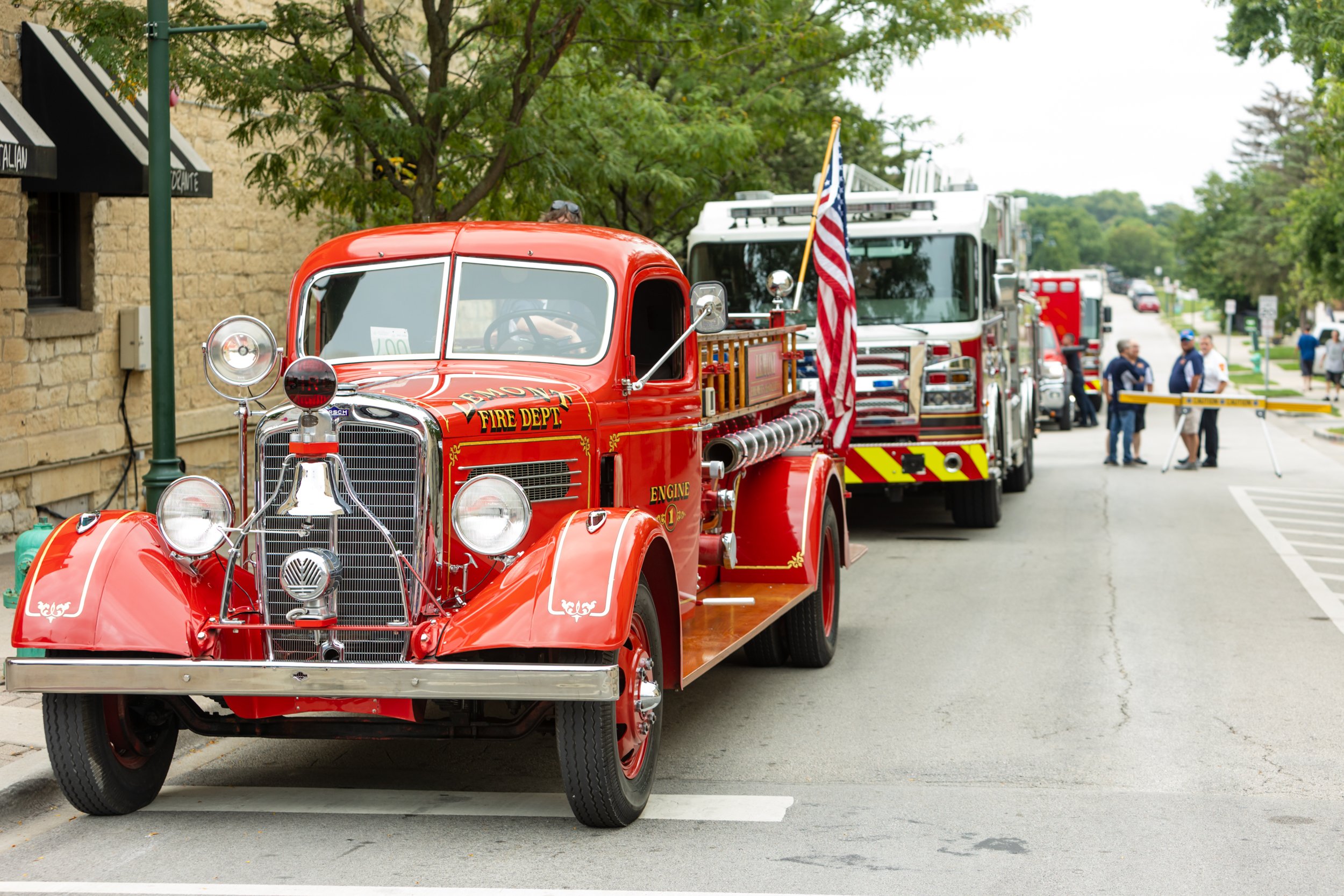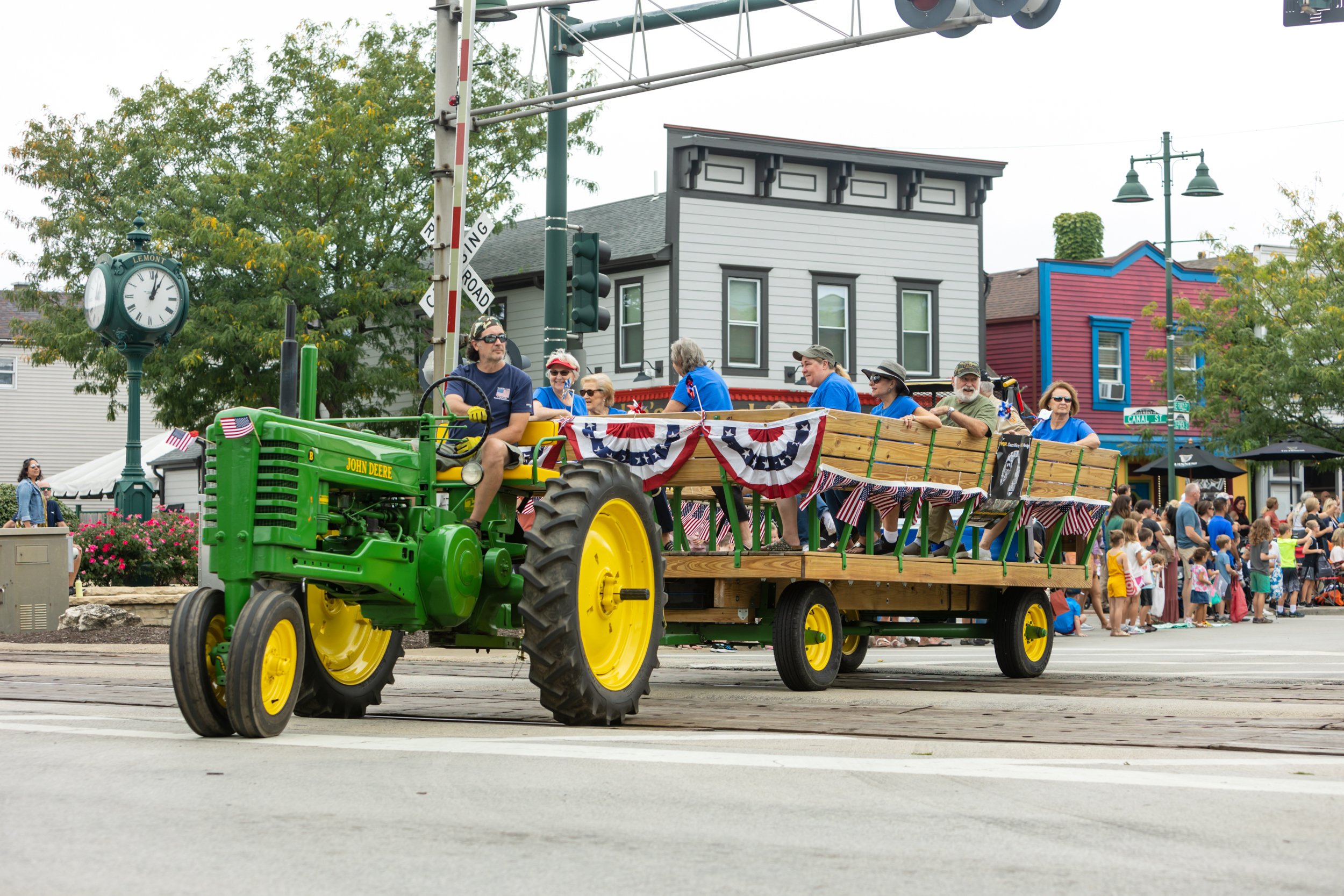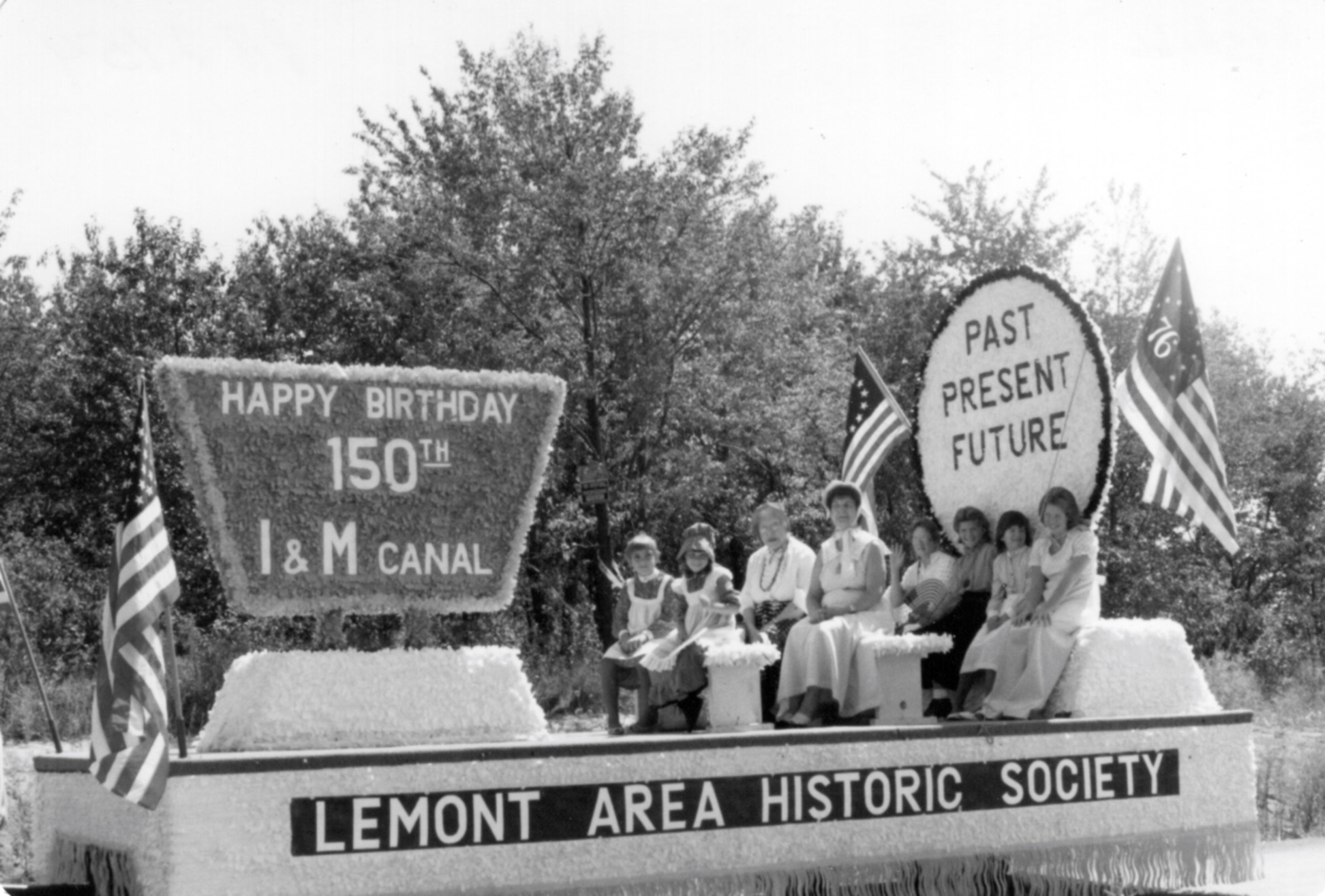Lemont: Images of America Book to Celebrate 150 Years hits the shelves
Lemont: Images of America by Arcadia Publishing | Available November 6, 2023
One hundred fifty years from now, or even fifty years from now in 2073, what will someone write about us?
In our day-to-day work sharing the story of Lemont, we highlight what naturally radiates through – our tight-knit people-focused community, our budding arts, thriving businesses that are breaking barriers for women in entrepreneurship, and a fun-loving community that celebrates every occasion.
But the early settlers of Lemont thought the same thing. Immigrants sought a new life and to build a foundation far away from their homeland. They built a life here and became legends leaving their mark on Chicago and the entire nation. Today, we continue to be known as a growing destination for those seeking community and connection.
To honor the 150th Anniversary of the Village of Lemont, the Village’s Economic Development Director, Jason Berry, teamed up with local historian, teacher, and Explorer, Kevin Barron, of South Cook Explore.
We sat down with them to learn more about the book, and their process, and to look forward to the next 150.
KG: When did you start working on the book?
KB: Jason and I were participating in a Historic Downtown Lemont Walking Tour organized by the Lemont Area Historical Society when we came up with the open house concept Lemont Unlocked, a one-day annual event where we open access to popular locations and let folks lead themselves on self-guided tours.
Through initial conversations about creating Lemont Unlocked, I mentioned how every community has an Images of America book but Lemont. Jason's response was something like, "Well, we could do it. Ordinary people write those books and we're heavily interested in the village, why shouldn't we write it?" I think I contacted Arcadia Publishing the next day about creating this book.
Photos show the early days of the Stephen Street Bridge, canals, rail, and roadways that made Lemont a prime transportation spot. | Courtesy of MWRD and LAHS
KG: It’s easy to love Lemont. What was your approach to covering a topic that had such a rich history and so many things and people to include?
JB: The Village of Lemont had published books for its 100th and 125th anniversaries. With the 150th anniversary approaching in 2023, there was lots of talk about having a new book. I knew it would be tough to take on the challenge of following those books, and have always loved Arcadia Publishing’s Images of America series, so I was looking for someone to do one of those. I mentioned it to Kevin, and he shared his love for the series, and decided we’d do it.
We began with some overall themes that could be chapters, and then began sorting through photos at the Lemont Area Historical Society (LAHS). We knew we needed to create some limits, so we decided to only present images in their collection. If there are any complaints… it wasn’t in the collection! We did make a few exceptions. The Metropolitan Water Reclamation District—formerly the Chicago Sanitary District—has an awesome plate glass photo archive and is so important to the history of Lemont that we asked to use a few images from them. Another exception is Barb Bannon, LAHS volunteer and past board member brought out a few photos to us that we had to use to share the story.
This is a book of Lemont's history but it is not a history book – it’s storytelling through images. Some history was left out if there weren’t good images. For example, the I&M Canal probably had a greater impact on Lemont than the Sanity and Ship Canal but the I&M was dug in the 1830s – there were no photos.
KG: Tell me a little bit about the story that shines through in the book.
KB: The book highlights several aspects of Lemont's history, including prehistoric maps of our unique geography, photos of the Chicago Sanitary & Ship Canal, various 19th-century limestone churches to local businesses, up to photos of the 1970s tornado.
Jason and I are both big fans of this book series, so we discussed what we liked and didn't like about other Images of America books to ensure ours was comprehensive and as entertaining as possible.
Militia troops stand off against Lemont quarrymen at the Chicago & Alton Depot | Photo Courtesy of LAHS
KG: What stories were the most surprising and inspiring to tell?
KB: For being a relatively smaller suburb in Chicagoland, there's so much unique history to Lemont. There were parallels to Chicago's history we could see in our village, like a downtown construction ordinance that required all new buildings to be brick constructed instead of wood frame for the same reason Chicago did after 1871 - a significant fire!
I enjoyed making connections to historic homes and their original owners as well as comparing maps and other resources within the Lemont Area Historical Society's incredible archives.
JB: I found the labor massacres in 1885 and 1893, and their connection to Albert and Lucy Parsons, the Chicago Anarchists, and ultimately, the Haymarket affair, fascinating and inspiring.
Illinois Governor Ogelsby ordered four companies of the state militia to march to Lemont on May 4, 1885, to crush a quarry strike. They were met by the locals and quarrymen striking for better pay. With the military confrontation, two men died on our streets from gunshots, and a third later from his wounds. Women were attacked, beaten, and bayonetted. It was widely reported, and to my surprise, it was the Lemont Township Supervisor, John McCarthy, who invited Parsons to speak to the workingmen in Lemont.
Parsons was reviled and feared by Chicago robber barons. His newspaper, The Alarm, openly called for working people to fight capitalists with dynamite. Lemont, a quarry town, had a lot of men who knew how to properly use dynamite! That an elected official would invite Parsons to Lemont was shocking, but taught me a lot about McCarthy and this town.
A year to the day after the Lemont massacre, a massacre occurred in Chicago at Haymarket Square. Parsons and seven others were charged with inciting the crowd, where someone threw a bomb at police officers sent to stop the event. Parsons was among eight men found guilty and seven of them were sentenced to death. Four were hanged - Parsons, Spies, Fisher, and Engel – and a fifth, Lingg, killed himself in his jail cell.
The remaining three men were in Joliet prison when, in 1893, an Illinois governor once again sent the militia to Lemont, following reports from County sheriffs of rioting strikers. Governor Altgeld visited Lemont to investigate, and realizing he was deceived, squarely supported the side of the strikers, and helped them earn an increase in pay. Altgeld was already studying the Haymarket case, and would have known of Lemont’s role. A flag bearing Lemont’s name was part of the evidence introduced by the State against the anarchists, and Parsons himself mentioned Lemont in his testimony. Weeks later, Altgeld would pardon the three remaining Haymarket activists.
Woman stands above Quarry No. 1 in Lemont with limestone stacked | Photo Courtesy of LAHS
KG: That probably plays into what went into the modern-day labor movement throughout America. What themes did you notice about early settlers to Lemont that still hold true today?
The “Polish Church” in Lemont, IL | Photo courtesy of LAHS
JB: In a way, it’s a lot of the same things that we read about today: someone leaves their homeland in search of a better life after a famine, conflict, or searching for better opportunities. The early ethnic groups that settled in Lemont were Irish, then German, then Polish, and Scandinavian. They arrived as poor peasants desperate for work. Their presence in Chicago was despised by native-born residents. The Chicago Tribune wrote about “aliens” and “foreign savages” in dehumanizing terms, calling European immigrants “Slavic wolves.” These immigrants brought their families and by necessity formed tight social bonds that led to churches circled by their communities. You can still hear Polish mass several times on any Sunday at SS. Cyril & Methodius.
Over the years, those tight circles loosened: more people learned English, they came to fight for equal rights and better labor laws. In Lemont, you can still experience their influence in the food, the traditions, and our church steeples.
KB: Lemont is unique compared to other communities. We have structures built into hills, church steeples rising high on bluffs, and a Downtown centered around three types of transportation: waterways, railroads, and unique roads.
It’s fascinating to live in a community that feels like a live history exhibit. Despite the Village’s rapid growth, the neighborhood is still a tight social circle and community that supports one another.
KG: Who were your partners in gathering all of the materials needed?
Pat Camalliere at the Village of Lemont’s 150 Anniversary Party, Local author, historian, and author of the Foreward for Lemont: Images of America | Photo by Molly Hebda Photography
JB: The Lemont Area Historical Society was our most important partner. All proceeds from the sale of this book will go back to the LAHS. Board Member John Quinn worked to scan everything and make it accessible online for us to view and we could work on the book from anywhere, not just in the museum. We have to extend our thanks to Susan, Gail, Tricia, and Barb – board members and volunteers who offered clarifications and answered every question.
Pat Camalliere, who wrote the book’s foreword, was a huge help in helping us edit, fact-check, and work with us through every revision. As a published author, she was a great guide for helping us navigate this process.
The Metropolitan Water Reclamation District provided additional photos. The family of late-local artist, Joyce Affelt, gave us permission to use one of her prints of Budnik Plaza and downtown Lemont. Abigail Rose of All Together Studio created maps for us based on existing materials and through our partnership, we used additional images by Molly Hebda, photographer for Lemont Downtown.
KG: What do you think early settlers would think of modern Lemont?
KB: They'd probably be very confused that we only have about ten or so bars in the downtown area when streets like Stephen or Canal were previously lined with saloons!
Saloon on Canal St below the Fischbach Building in Lemont | Photo Courtesy of LAHS
They’d be shocked for many reasons: farmland became residential subdivisions and the many technological advances like Lemont Road High Bridge and Front Street Lofts.
I think our downtown would be the most familiar as we’ve done great work preserving 130-150-year-old buildings and finding new uses for them.
JB: We were a small town in Cook County for a very long time. We have some very rural roots and you can still catch a glimpse of it with a tractor ride.
But in all fairness, we are a town that now has 30+ women-owned businesses centrally located downtown and boosting our local economy. We still celebrate, honor, and protect religious diversity with places like the Hindu Temple of Greater Chicago, the Lithuanian World Center, and many of the seven steeples still calling Lemont’s skyline home.
I’d hope they’d be proud of that.
KG: How does Lemont still honor some of our earliest traditions and ways of life?
Lemont Mayor John Egofske at the Village of Lemont’s 150 Anniversary Celebration in June 2023 | Photo by Molly Hebda Photography
JB: Lemont loves Lemont. When you go back into the archives you can see we had a lot of parades. St. Patrick’s Day Parade has become one of the biggest days of the year and of course, Keepataw Parade.
KB: Keepataw Days is a community celebration named to honor a Potawatomi Chief. Chief Keepataw would patrol areas where The Bowl is presently located and areas along the Des Plaines River all the way to Kankakee. In fact, with the exception of Wilton Center going south, US-52 between Joliet and Kankakee is still a non-grid trail that was used to commute between these two valleys.
More generally, we have been and will probably always be a village rooted in tradition - we will still have our annual parades, church celebrations, etc.
Photos of the Keepataw Day Parade throughout the Year | Photos by LAHS and Molly Hebda Photography
KG: Lemont loves a good parade. tell me, How does Lemont's story weave into Chicago and America's story over the last 150 years?
KB: There are so many directions to consider here and many similarities to Lemont's and Chicago's histories. Both cities are located on the original route of the I&M Canal, the method of transport before Chicago became a dominating hub for railroads. Our labor history is tied with the Quarry Workers Massacre and Haymarket Riot.
One of the first quarry owners, Horace Singer (whose uncle patented the Singer sewing machine) was also a Cook County Commissioner and used his power after the Chicago Fire of 1871 to promote the use of Lemont's "Athens Marble" dolomite limestone for the rebuilding of Chicago. Evidence of its quality is seen in the "fire-proof" Chicago Water Tower and Union Stockyards gates, but also in several churches and businesses in Chicago.
We both experienced an architectural shift following fires, so our downtowns both decided before 1890 to no longer allow wood structures to be built in the densest part of town. Both cities were known for being blue-collar worker communities and feature many examples of vernacular housing.
Kevin Barron of South Cook Explore, Co-Author of Lemont: Images of America
KG: Kevin, your work with South Cook Explore looks at so many areas around the Cook County/Chicagoland area -- what ties you into Lemont?
KB: I have lived in the south suburbs my entire life - Midlothian, Palos Hills, Tinley Park, Oak Forest - but that feeling of living in a community that makes historic preservation a focus was attractive to me. I didn't know until after I purchased my first house in Lemont how incredible the community is! My neighbors are great, I enjoy the frequency of events in town, and my community is well-maintained. I love introducing friends to the area because it is such an "island" surrounded by forests and has a downtown, unlike many other communities.
I don't have a long history of living here, but I certainly look forward to having a long future in this community.
KG: Jason, as Economic and Community Development Director, what is your hope for the future of Lemont, its businesses, and the community?
Jason Berry of the Village of Lemont, Co-Author of Lemont: Images of America
JB: Lemont has an aura about it. I usually just say it’s “Lemont-ness” and people that live here nod and know what I’m talking about. I often say it’s because it’s a very real place. The town was built by Irish workers digging a canal with a pick and shovel through bedrock. It was tough. That has lingered, especially because it stayed a small town for so long, and there are so many generations upon generations living in Lemont. I hope that never stops. I hope even the people moving here for the first time, maybe in some new subdivision, have the opportunity to discover our “Lemont-ness,” and their kids and grandkids continue to come back to a town that’s hard to leave.
KG: In the next 50 years, what do you hope shines through in this current chapter/era of Lemont?
KB: We will still be the community people want to live in. Schools and services are incredible here. Our population between 1970 and 1990 nearly doubled, and we've seen another 5,000+ people move in since then. We have new construction of homes and subdivisions, new businesses, and new services available that continue to add to our growth.
I think the growth over the past 50 years will continue as the secret keeps getting out that Lemont is a safe, clean, friendly, and beautiful town people want to be in.
JB: Right now the Village is focused on improving the historic downtown, making it a lively destination, but do our best to not lose sight that “little Lemont” is what makes Lemont special.
I’ve seen so much local growth, local ownership, and mom-and-pop businesses ready to reinvest in Lemont. There’s confidence in Lemont right now, and certainly a lot of pride in where we’ve come from.
The confidence of this period, I hope that shines bright in 2073, when the Village celebrates 200 years of its incorporation. I won’t be there, but you know I’ll be raising a glass in toast wherever I may be!
Cheers, Lemont!
KG: Cheers!
Available on November 6, 2023 wherever books are sold and available for pre-order at Arcadia Publishing.



